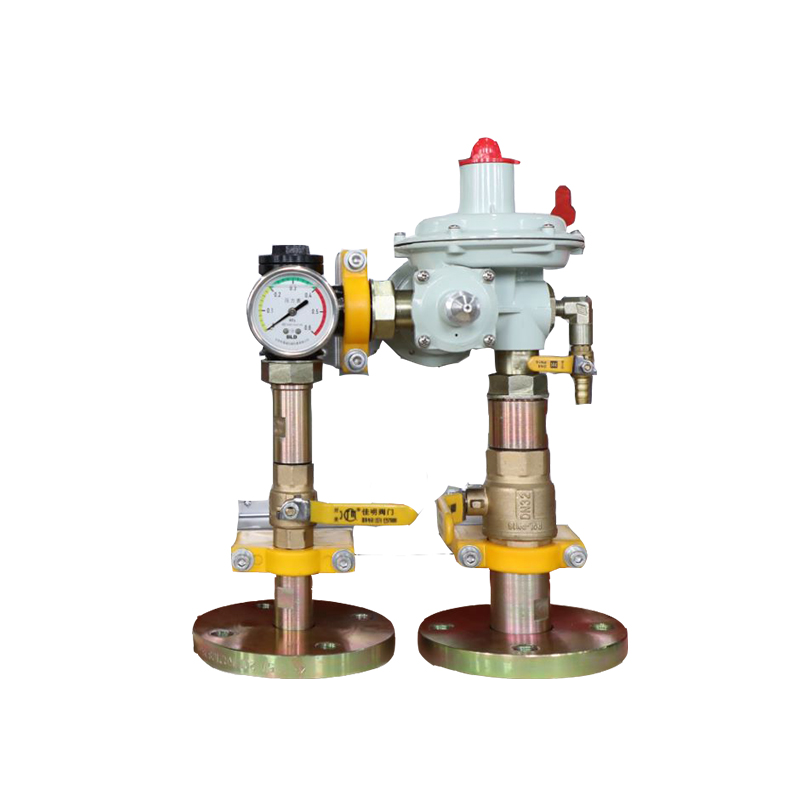
Oct . 11, 2024 08:23
Back to list
pressure reduction skid
Understanding Pressure Reduction Skids Key Components and Applications
In the realm of industrial processes, managing pressure efficiently is a crucial aspect. Industries such as oil and gas, chemical manufacturing, and water treatment often encounter high-pressure environments that necessitate regulation for safe and effective operation. One of the primary solutions to this challenge is the implementation of pressure reduction skids. This article will delve into the components, working principles, and applications of pressure reduction skids, providing insight into their significance in modern industry.
What is a Pressure Reduction Skid?
A pressure reduction skid is a pre-assembled system designed to reduce the pressure of gas or liquid in a controlled manner. It serves as a compact, portable unit that can be easily transported and installed at various sites. Typically equipped with valves, pressure regulators, instrumentation, and piping components, skids facilitate the efficient and safe reduction of pressure from a high-pressure supply to a desired lower pressure for downstream processes or equipment.
Key Components of Pressure Reduction Skids
1. Pressure Regulators At the heart of any pressure reduction skid are the pressure regulators. These devices maintain the desired outlet pressure regardless of fluctuations in the upstream supply pressure. Regulators work by sensing the downstream pressure and adjusting the flow accordingly.
2. Valves Various valves, including control valves and isolation valves, are integral to the operation of the skid. Control valves enable precise adjustments to the flow rate, while isolation valves allow for safe maintenance activities without disrupting the entire system.
3. Instrumentation To ensure efficient operation, pressure reduction skids are equipped with various instruments, including pressure gauges, flow meters, and temperature sensors. These devices provide real-time data that operators can use to monitor system performance and make necessary adjustments.
4. Piping and Fittings The skid includes a network of pipes and fittings designed to facilitate the flow of gases or liquids through the system. The materials used in piping are carefully selected based on the properties of the fluid being transported, ensuring durability and corrosion resistance.
5. Skid Frame All these components are mounted on a robust skid frame, which not only facilitates easy transportation and installation but also provides structural support to withstand operational stresses.
pressure reduction skid

Working Principle
The typical operation of a pressure reduction skid begins with high-pressure fluid entering the system. As the fluid flows through the skid, it encounters a series of valves and regulators designed to gradually reduce the pressure to the desired level. The pressure regulators constantly monitor and adjust the flow, ensuring that the outlet pressure remains stable despite changes in supply pressure. The processed fluid can then be redirected to various applications, including equipment that operates at lower pressures, such as pumps and compressors.
Applications of Pressure Reduction Skids
Pressure reduction skids find applications across multiple industries
1. Oil and Gas In oil and gas extraction, it is common to encounter high-pressure gas or liquids. Pressure reduction skids are critical in managing this high pressure before the materials are sent to processing facilities or storage.
2. Chemical Manufacturing Many chemical processes require precise pressure control to ensure safe and effective reactions. Skids provide necessary pressure regulation for various chemical processes, influencing yield and efficiency.
3. Water Treatment In water treatment plants, pressure reduction skids help regulate the pressure of incoming water to meet the standards required for purification processes, such as filtration and chlorination.
4. HVAC Systems In heating, ventilation, and air conditioning (HVAC) systems, pressure reduction skids assist in regulating pressure for different zones within a building, optimizing efficiency and comfort.
Conclusion
Pressure reduction skids play a pivotal role in industries that deal with high-pressure fluids. By integrating key components such as pressure regulators, valves, and instrumentation within a portable unit, these skids enhance safety and operational efficiency. As industries continue to evolve with a focus on automation and efficiency, the importance of effective pressure management through pressure reduction skids will undoubtedly grow, highlighting their essential role in modern industrial applications.
Next:
Latest news
-
Safety Valve Spring-Loaded Design Overpressure ProtectionNewsJul.25,2025
-
Precision Voltage Regulator AC5 Accuracy Grade PerformanceNewsJul.25,2025
-
Natural Gas Pressure Regulating Skid Industrial Pipeline ApplicationsNewsJul.25,2025
-
Natural Gas Filter Stainless Steel Mesh Element DesignNewsJul.25,2025
-
Gas Pressure Regulator Valve Direct-Acting Spring-Loaded DesignNewsJul.25,2025
-
Decompression Equipment Multi-Stage Heat Exchange System DesignNewsJul.25,2025

